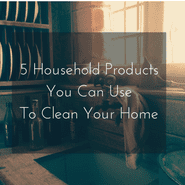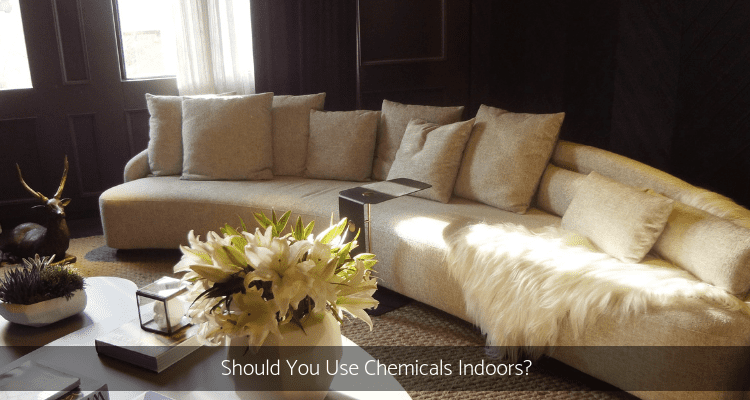If you live, work or play in buildings, chances are you have heard someone talk about chemicals. But should you use chemicals indoors?
To answer that question, first we must learn exactly what chemicals are and how they affect your indoors. Once we understand what chemicals are and what they do, we can then make a decision on whether to use them.
What Are Chemicals?
The biggest enemies of indoor air quality comes straight from our bodies. These contaminants are from our breathing, sweating, passing gas and shedding skin cells that enter the air when we enjoy occupying these safe, comfortable surrounds. Over time, or even with many occupants, residue from these bodily functions can accumulate in the form of moisture, condensation, odourous waste and even accumulate in the materials and on surfaces.
Now, in the past, the only way to remove these contaminants was by opening windows and doors and ventilating the space. After the space is ventilated, cleaned and freshened by air circulating from outside to inside and vice versa, you then have the building cracks and crevices to maintain some sort of air flow to sanitize the air. All in all, that is a very simple solution. Never mind the air exchange it takes to get everything clean.
Since 1950’s, there has been a big push away from natural living as more and more consumers look to reduce their exposure to what many considered to be polluted living conditions. At the same time, authorities were looking for easier and more efficient ways to seal buildings in the name of sustainability. Thus, poor indoor air quality was born.
Products and materials that use an array of ingredients target bodily functions, sprays and squirts to break them down before they accumulate in any occupied space. In many ways, they act as a cover up in your space just like chemicals should.
PRODUCT:
Naturally Home Starter Kit
Get back to basics and DIY! All the ingredients you need to make your own SAFE and EFFECTIVE cleaning products. The good old basics that our grandmothers used to clean with!

Early Problems With Chemicals
Spray, squirt, bomb, wash, fill, wipe, clean and drench with chemicals every day aren’t without their problems. Various substances leak into the air mass continually to provide instant gratification, but at what cost. That means that the substances may slowly poison occupants. Another big problem is sealed buildings would actually perpetuate the chemical off gassing, preventing the ever increasing amount in the indoor air and occupants inhaling them almost continuously.
Modern Methods
However, today, things are a bit different. Natural products, methods and services have been created to withstand the effects of indoor air quality and most even have a resurgence from an era before chemicals. They’re made with natural ingredients that will target specific areas and break it down in your air before it ever has a chance of reaching your lungs and skin.
Are Natural Methods Enough?
With the big push to be more natural and rely less on chemicals, many families are now considering going natural with their indoor air care. They do this by only using natural ingredients to clean and sanitize their homes. Unfortunately, while they do a good job, they are not as effective against situations that have been there for a long time like mould and other types of organic contaminants. When all is said and done, you can probably reduce your dependence on chemical usage if you are diligent and use a bit of initiative, but I would recommend using a professional to help you further.
Remember, you have to consider all the different types of contaminants when you clean your indoor air, and not just one or two specific types of contaminants. That’s why you are probably better off if you talk with a Building Biologist who can oversee the use of treatment combinations alongside your routine for your home or office.
PRODUCT:
Building Biologist
I believe you should spend less time figuring out what to do (that is my job) and more time breathing easier, living easier. I cut out all the fluff and confusion to indoor air quality maintenance and strip it down as a Building Biologist. Adverse health effects and effective strategies reduce occupants’ exposure by eliminating and controlling as many sources of pollutants as possible.

What About Your Health?
In most cases, natural solutions, methods and services are perfectly safe for most furnishings like your bedding, lounges and flooring. In fact, the reduced dependence on harsh chemicals in favour of a more natural solution will actually be beneficial to your furnishings and occupants’ health. Over time, toxic substances can have very adverse effects on the occupant’s health. By using a more natural approach, you can save your money from some visits to the pharmacy or medical practitioner.
So Are They Right For You?
At the end of the day, it is really up to you. If you don’t mind going with the traditional chemical solutions, then you can probably expect to take extra precautions, read the labels, understand the contents, understand their adverse health effects to you and the environment, and understand that there is no guarantee how long they will linger around for.
However, if you would prefer to use a more natural approach with your indoor air care, then natural solutions may be a great fit for you. You will quickly discover that your air is as clean and fresh as it probably should be and ventilate by opening windows and doors.
HOW TO
5 Common Household Products You Can Use To Clean Your Home
Check out how to clean indoors with natural ingredients so that you can avoid using those harsh chemicals that may irritate your skin and ruin your next breath.

The Precautionary Principle
There are many crazy claims out there about chemicals and what they can do for your home, your office and you personally. Some of them are unsafe health wise, but don’t be fooled by some of the more toxic claims out there. Remember that the best overall solution is to open windows and doors as part of your regular indoor air care routine but don’t ever rely on marketing entirely. By using natural cleaners alongside your ventilation routine, you can greatly improve you air quality and make maintenance of your indoor spaces much easier to do.
Where To Next?
I believe you should spend less time figuring out what to do (that is my job) and more time breathing easier, living easier, and I also see it’s a big picture that needs mastery.
As a Building Biologist, I acquired knowledge of adverse health effects and recommend effective strategies to reduce occupants’ exposure by eliminating and controlling as many sources of pollutants as possible.
I encourage you to have conversations about Quality Indoor Air and Air Purification, ask questions on the Mitey Fresh Facebook Page because other people may well be wondering the same thing, and I will do my best to answer them there. Or please call me directly on the land line 02 9986 3432.
Towards healthier living, Carol Parr ♥
Author
-
We’re glad you’re here. We’re Carol and Tony, founders of one of the longest running Healthy Home Blogs in the world, Mitey Fresh Australia. We’ve been on this journey for the last 25 years and are passionate about helping families sift through health hazards and triggers like allergens, mould, water damage, chemicals and EMFs, to get clarity about what’s toxic and what’s not so they can create a healthy and happy home for their family they love. Each month, people visit this blog seeking focus on the health and wellbeing of their loved ones, sustainable and effective practice tips and guides, to help create and manage healthier indoor spaces, improve the built environment that is pleasing to the senses and support healthy living and nature, every day. Starting this blog was to help change people’s lives, one family at a time, and we can’t wait to share how its allowed us to stand next to you and show you how interpreting these synergies between buildings and the environment they are built in will impact upon the health and well-being of those who occupy them. Find out more about Healthy Homes and what this blog can do for you!
View all posts





